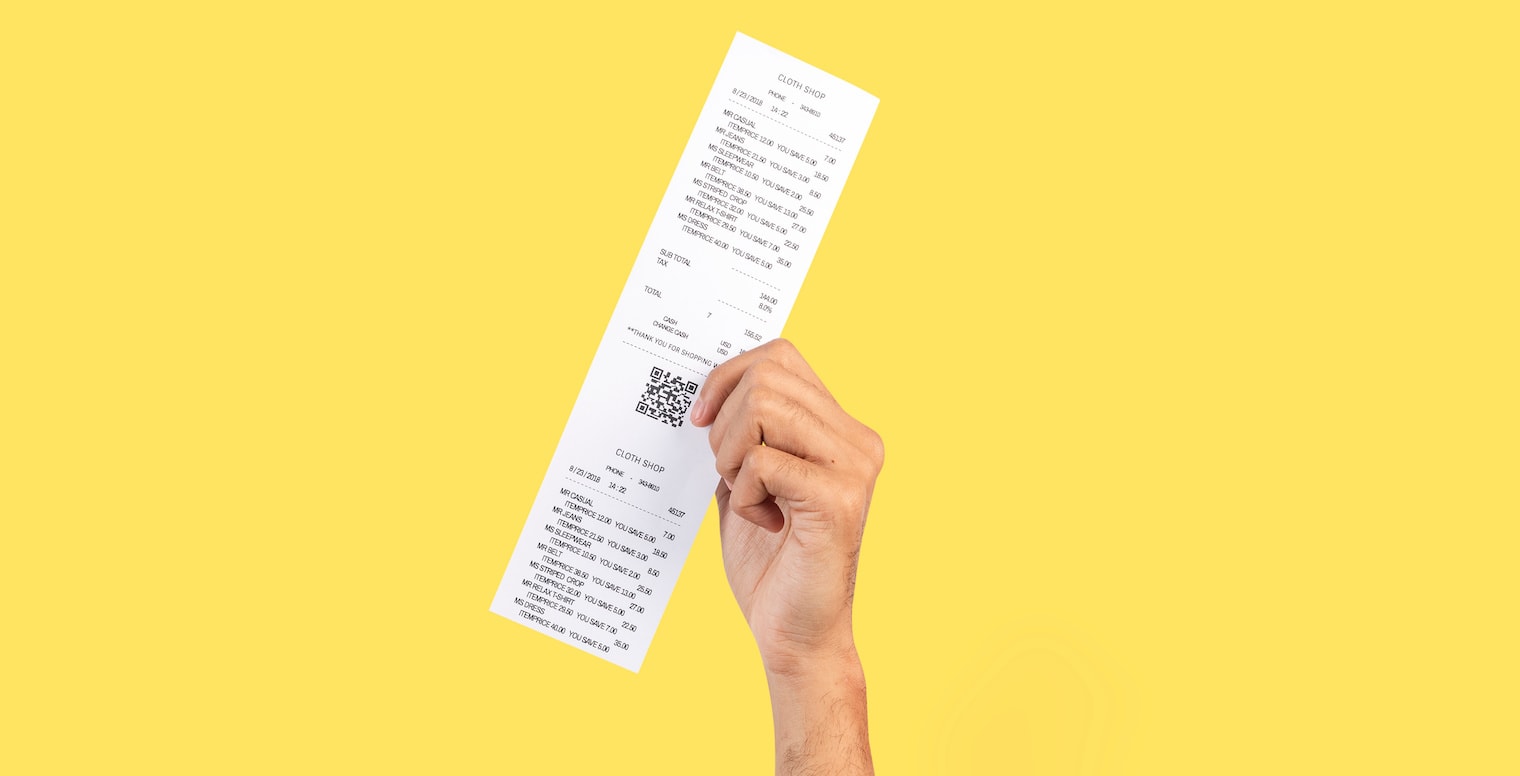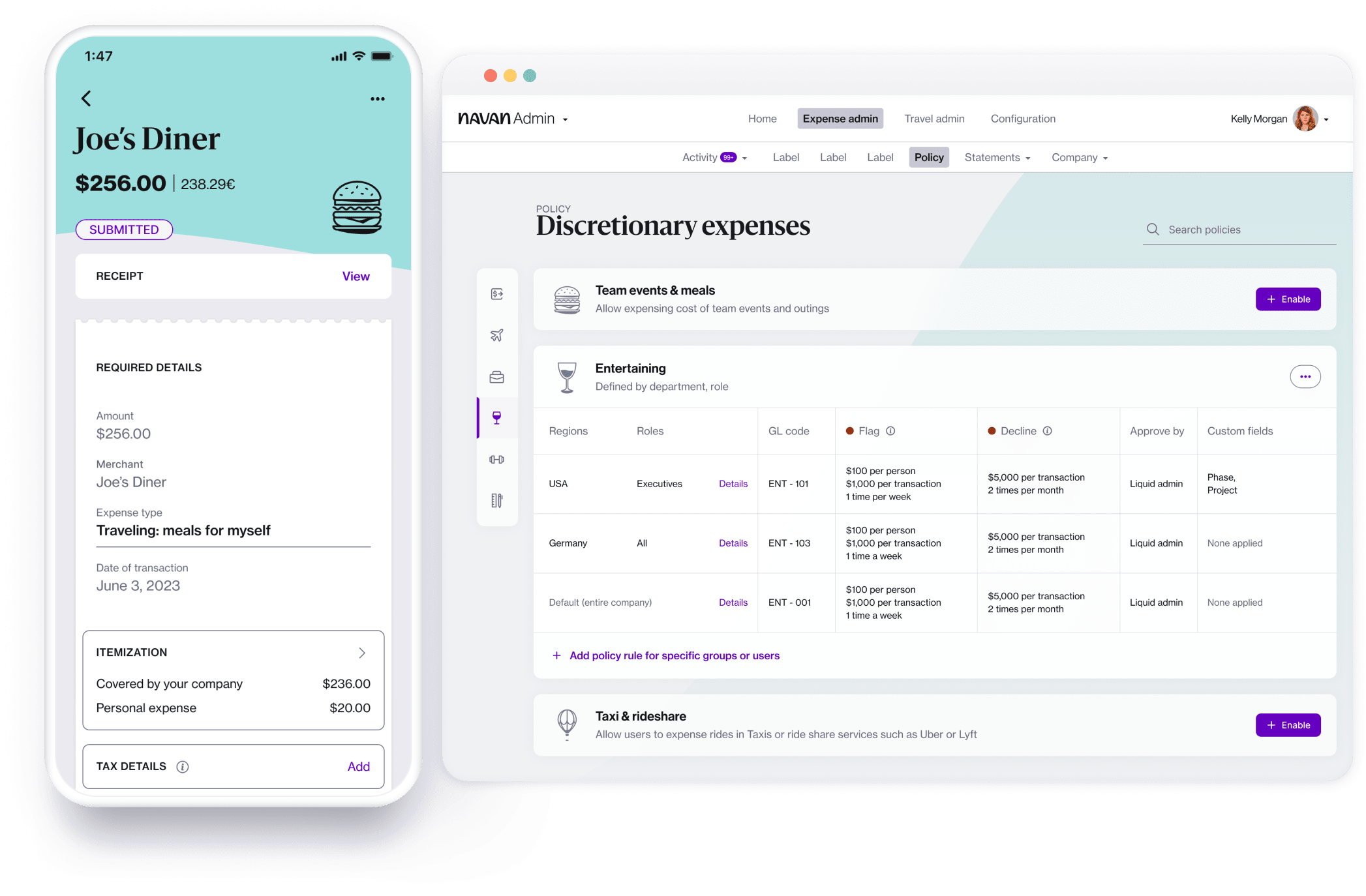The Ultimate Guide to Business Travel Expense Reports

Business travel is the engine that fuels a successful company and drives growth. But let’s face it, those travel costs can add up. Travel spend often represents a significant chunk of a company’s budget, so timely travel expense reporting is the key to maximizing every dollar spent on the road.
This comprehensive guide covers the basics of capturing expense receipts and handling reimbursement requests. It then covers how companies can use modern spend management tools to automate the entire expense process. Along the way, you’ll find insights, best practices, and expert tips. Let’s dive in!
FAQ: Travel Expense Report Basics
Below is a primer for those getting started with capturing business travel expenses.
What is a travel expense report?
These documents are used by employees to record and detail expenses incurred during business trips. They typically include details on mileage, airfare, accommodation, meals, and other travel costs, alongside matching receipts for each expenditure. These reports are submitted to employers for reimbursement and serve as a means of tracking and managing corporate travel expenditures.
Why are expense reports important?
Travel expenditure records play a crucial role in maintaining financial discipline, transparency, and compliance within an organization.
This documentation is important for several reasons:
- Budget control and expense planning: These documents help companies track and manage travel spend and can assist finance teams in forecasting future travel budgets.
- Policy compliance and reimbursements: Statements of expenses help ensure employees spend within company guidelines and facilitate timely, accurate reimbursements.
- Tax compliance and audit trail: Itemized expense details create a detailed record for auditing and provide accurate records for tax purposes, ensuring proper deductions and compliance with tax laws.
- Fraud prevention: Tracking expenses can help detect discrepancies, unauthorized claims, and policy violations — ultimately reducing financial risk.
What is the definition of a business travel expense?
A travel expense refers to any cost incurred by an individual while conducting business-related activities away from their usual work location. This includes expenses such as transportation, accommodation, meals, and other incidentals necessary for the purpose of the business trip.
What are typical business travel expenses?
These expense types are typically reimbursed by the employer:
- Transportation: Airfare, car rentals, or train tickets
- Accommodation: Hotel or lodging expenses
- Meals: Food and beverages during the trip (also known as per diems)
- Ground transportation: Taxis, rideshares, or public transportation
- Mileage: Reimbursement for using a personal vehicle
- Parking fees and tolls: Fees related to vehicle use
- Communication: Phone calls or Internet charges directly related to business
- Conference or event fees: Registration costs for professional events
- Incidental expenses: Miscellaneous expenses like tips or small purchases
- Visa and passport fees: If required for the trip's business purpose
It’s a best practice for a company to outline exactly what travel expenses are reimbursable in a travel and expense policy. This document also outlines the approval, booking, and expense reimbursement processes.
What’s included in an expense report template?
Specific details included on these reports typically include:
- Category: Category for each expense (e.g., airfare, lodging, meals, transportation, etc.)
- Vendor name: Name of the company or service provider
- Date of expense: The date the expense was incurred
- Amount: Total cost in the appropriate currency
- Payment method: How the expense was paid (e.g., personal credit card, corporate card, cash)
How does reimbursement for business travel expenses work?
Business travel expenses are reimbursed by employers after an employee submits a detailed expense report explaining the business use for each expense. This report includes receipts and documentation of incurred expenses. The company reviews and approves eligible expenses, then provides reimbursement to the employee, typically through payroll or expense reimbursement systems.
How Travel Expense Reports Work: A Step-by-Step Guide

So, how do employees report on their travel costs, exactly? Here’s a step-by-step guide to the expense process from the perspective of the business traveler.
Step 1: Understand Company Policies
The heart of a healthy travel budget is a solid travel expense policy. Before completing travel bookings or embarking on a business trip, travelers need to understand the rules around approvals and reimbursements.
Step 2: Collect and Organize Receipts
All receipts related to the trip need to be collected. This includes the travel booking itself — flights, accommodation, etc. — and the costs incurred during travel for meals, ground transportation, and incidental expenses.
Step 3: Create an Expense Report
After the trip comes the formal expense report process. Most companies use specialized software to assist with creating these documents, while some businesses use rudimentary Excel spreadsheets.
Step 4: Submit the Expense Report for Approval
After double-checking that all information on the expense claim is accurate, it’s time to submit it to the designated approver, typically a member of the procurement or finance team. These workflows should be outlined in a company’s travel policy.
Step 5: Receive Travel Reimbursement
Any out-of-policy reimbursements will be processed after an approver ensures the amount is accurate and aligns with company travel policy.

Methods for Creating Expense Reports
There are several ways to document expenses, and each comes with its own advantages and considerations. Here are some common methods:
Traditional Methods: Paper-Based Reports and Spreadsheets

Some companies still use paper-based templates or expect employees to use spreadsheet software such as Excel or Google Sheets.
While these methods come with a minimal cost, they require extensive time to complete and reconcile. These methods are also prone to data entry errors and is not scalable long-term as a business grows.
According to a Global Business Travel Association study, the average traditional expense report for a one-night hotel stay:
- Takes about 20 minutes to complete
- Costs companies $58 on average
Plus, one in five expense reports has mistakes or missing information, which leads to an additional 18 minutes to fix and $52 in company costs. A 2025 Skift and Navan survey revealed that 40% of travelers spend at least an hour filing a single manual expense report, while 16% report the process can take two hours or more. Multiply that by the number of reports a company processes each month, and it’s clear how these methods can suck up a considerable amount of time and money.
In Summary: Traditional Expense Reports
- Time to complete each report: 20 minutes
- Upsides: Minimal cost, no additional software requirements
- Downsides: Time-consuming to complete and reconcile; prone to data entry errors; not scalable as a business grows
Light Tech: Expense Tracking Software
A number of expense trackers on the market are specifically designed to document expenses. They often come with features like:
- Receipt scanning and mileage tracking
- Automated categorization
- Approval workflows
- Integration with HR and accounting software
These features are certainly a step above a spreadsheet. Compared to traditional reporting methods, this type of software can help make managing expenses easier for business travelers and improve the unwieldy bookkeeping process for procurement and finance teams.
The downside is that these expense trackers still require manual intervention and often rely on payroll to reimburse employees, which can cause unnecessary financial stress.
The Modern Way: End-to-End Automation

Today, technology exists to eliminate the entire expense reporting process.
Using travel and expense management software, companies can set travel policies; when they do, these spend rules are automatically enforced at the point of sale. With the swipe of a card, transaction details are categorized and reconciled, eliminating the need to create reports.
Let’s take a closer look at how this type of expense management system can increase compliance and streamline the expense management process for everyone involved.
Traveling employees:
- Gain confidence they’ll never overspend
- Have the freedom to book whatever in-policy travel options work best for them
- No longer need to save receipts
- No longer need to create expense reports
- Receive reimbursements in days instead of weeks
Travel managers and finance teams:
- Drive policy compliance at scale
- Review only flagged transactions
- Track every dollar spent via real-time dashboards
- Gain spend visibility and improve forecasting
- Reduce month-end close from days to minutes
How Demand Science Slashed Costs & Saved 20 Hours a Month on Expenses
As Demand Science expanded globally, it needed a more efficient T&E management solution to simplify processes and reduce administrative strain.
Since adopting Navan’s all-in-one platform, the company has cut 20 hours of manual expense work each month and achieved 31% savings on flights and hotels. Ivan Osotrio, Director of Accounting at Demand Science, shared, “Submitting and approving expenses is so much faster, and we no longer have to deal with errors in spreadsheets.”
This technology transforms all of the traditional processes around the reporting and processing of expenses, saving companies time and money. Schedule a demo to see how our spend solutions work.
Expense Reports: A Relic of the Past?
Fact: Traditional expense reports are needlessly complicated and waste employee time. Modern expense management systems enable employees to focus on growing the business instead of wasting time completing unnecessary busywork.
Summary
Traditional expense reports, while necessary for tracking business travel costs, are time-consuming and prone to errors. Modern expense management systems now offer automated solutions that eliminate manual reporting, enforce travel policies automatically, and provide real-time spend visibility — saving both employees and finance teams valuable time while ensuring better compliance and efficiency.
Ready to eliminate expense reports from your company? See how Navan can transform your travel and expense management.
This content is for informational purposes only. It doesn't necessarily reflect the views of Navan and should not be construed as legal, tax, benefits, financial, accounting, or other advice. If you need specific advice for your business, please consult with an expert, as rules and regulations change regularly.
More content you might like
Take Travel and Expense Further with Navan
Move faster, stay compliant, and save smarter.


